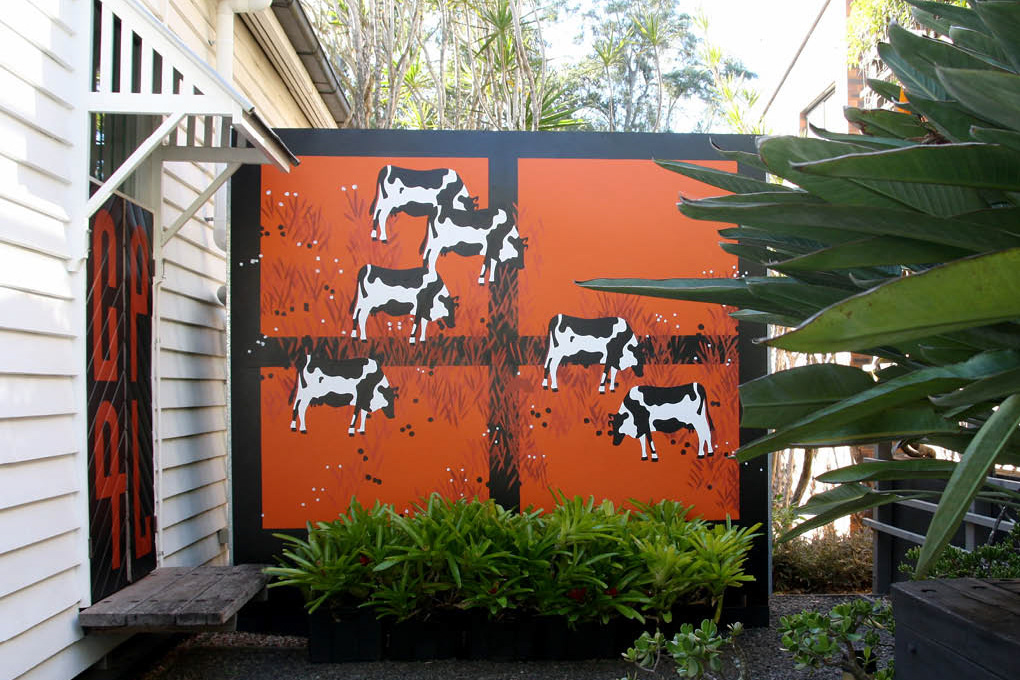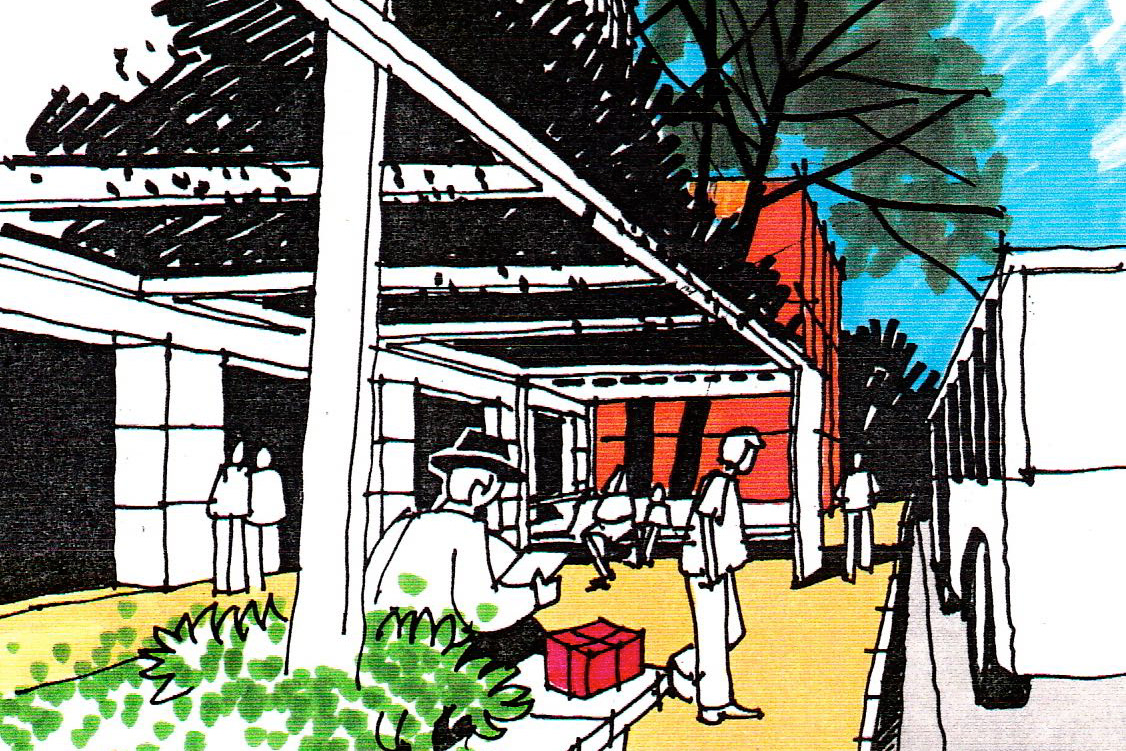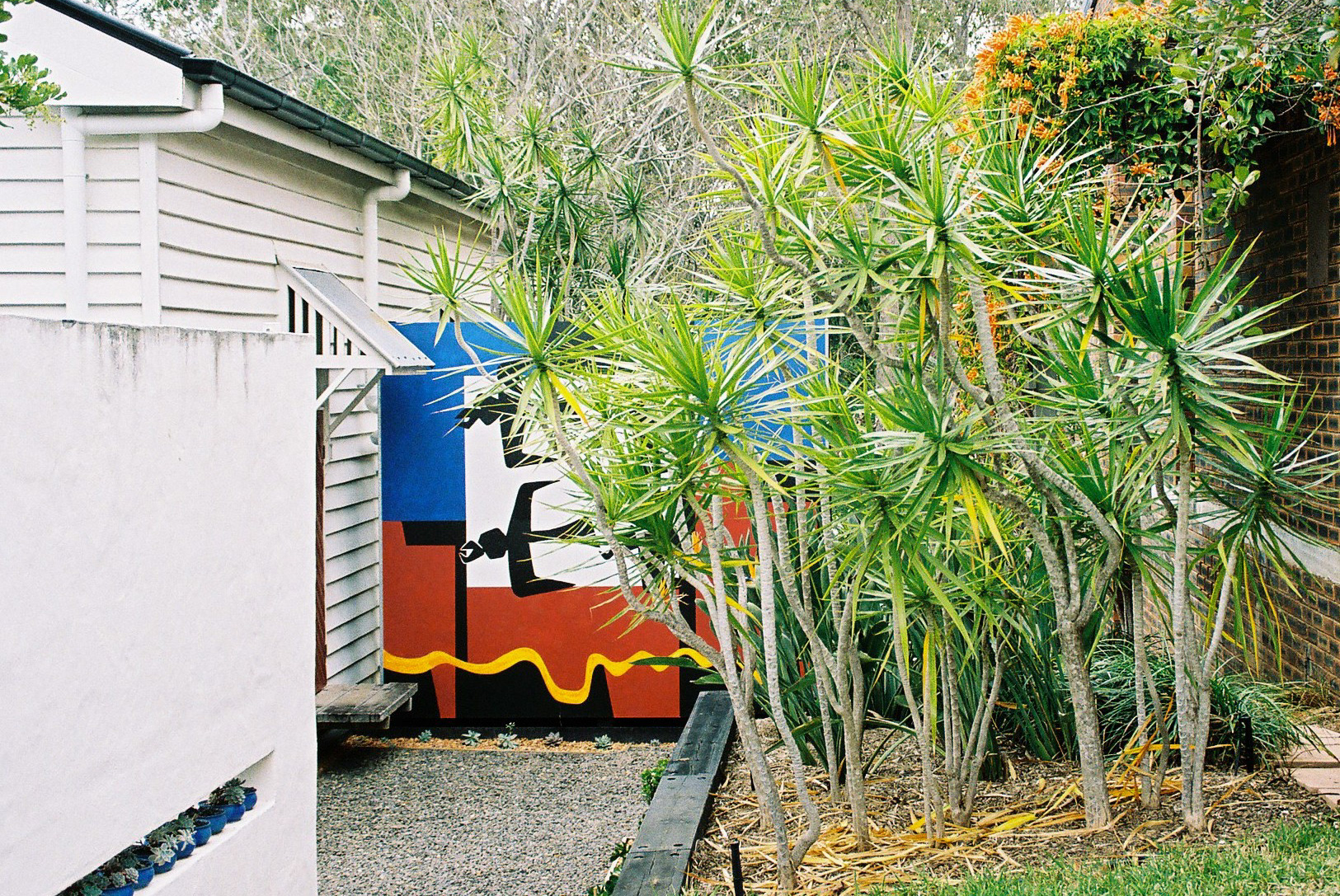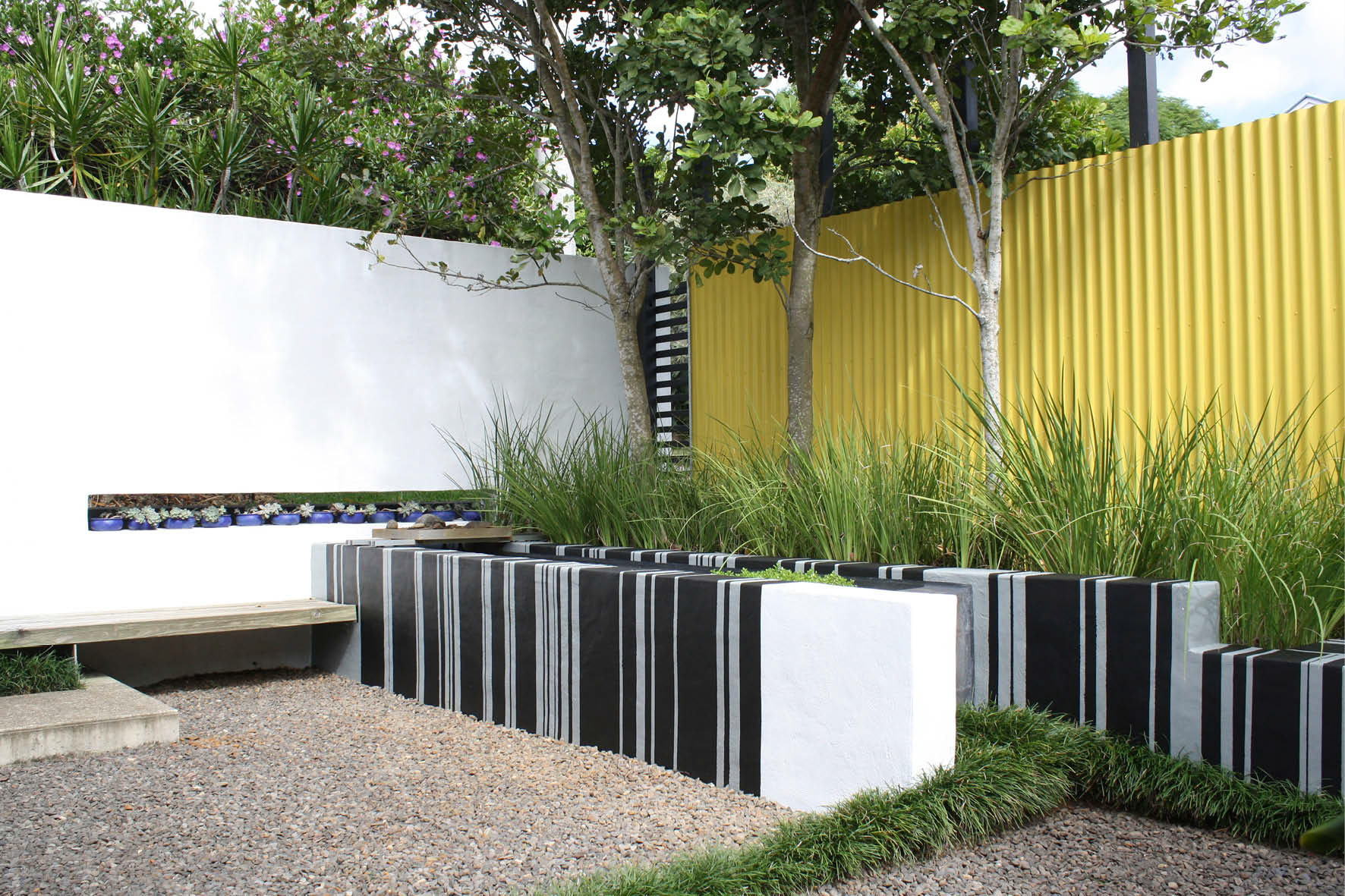We look down on the garden from our back deck ... a dirt space ... sometimes neat and raked ... sometimes covered in leaves and twigs from the overhanging trees or from the rearrangements of scrub turkeys. The trees are carefully trimmed to ensure that the view of the shadow garden is always nicely framed. It has been like this for 20 or 30 years and more ... an ongoing process. Intentionally.
When i rake, without any effort to construct a geometric pattern, I’m reminded of the gravel and sand gardens of the Buddhist monasteries in Japan ... and of the monks who never found nirvana. What matters is not the pattern, but the process of making and the process of looking after. The planted edges are formed in long undulating curves. But the garden of shadows is the space that you rake. It has a light covering of plasterers sand over clay subsoil. Over time the small tufted grass called fairy lights, which survives in inhospitable conditions, has gradually spread outward making its own thin layer of topsoil.
On the dirt floor, the sun and moon, the passing of clouds and the movement of leaves rustled by the wind create a theatre of shadows ... like an oriental shadow puppet show. When the clouds are full or the moon is absent, the garden of shadows ceases to exist. The garden of shadows is ephemeral, insubstantial, passing. It exists in negative space ... in the void left by the solid forms of the perimeter.
The garden of shadows is a constant meditation on the ephemeral nature of existence. Human life is no more than a flicker of the eye in the timespan of the universe.
Photomontage originally made for my design folio.
Ideas that pervade the garden: the hand of man and the hand of nature
In my house walls have been made as creators and receivers of shadows.
The garden of shadows on a sunny day









